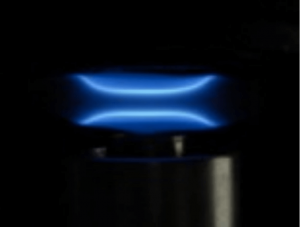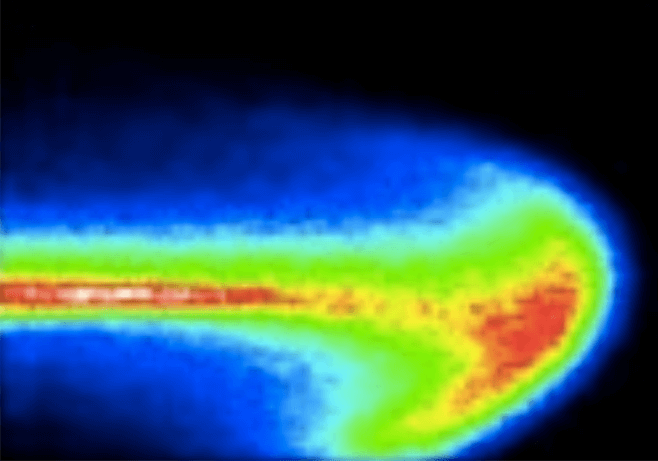Energy Engineering
Definition and Scope
Energy security and environmental impact is one of the greatest challenges facing mankind today. While fossil fuel combustion remains ubiquitous, alternative fuels (biofuels, syngas-derived) and alternative sources (solar, wind, nuclear) will play an important role in the future. Energy-related problems can only be addressed if traditional engineering approaches are complemented by the pursuit of knowledge of the underlying scientific issues. Understanding of energy generation, conversion and storage fundamentally requires an interdisciplinary approach, with many types of chemical and physical processes occurring on scales from the atomic level to kilometers.
Associated faculty
Fokion Egolfopoulos, Denis Phares, Paul Ronney, Sati Sadhal, Hai Wang
Strengths in AME@SC
The energy engineering group in AME consists of faculty (Egolfopoulos, Phares, Ronney, Sadhal, Wang) with long-standing and leading contributions in their respective areas.

Focus within a focus
Energy engineering research in AME is very active and in many instances, leading worldwide.
Combustion/Reacting Flows (Egolfopoulos, Phares, Ronney, Wang)
 Over 80% of the world’s energy production and use is based on the combustion of fossil fuels. Combustion is ubiquitous in traditional energy conversion systems such as automotive engines, stationary and aircraft gas turbines, rocket and space propulsion, electrical power generation, industrial furnaces, and home and institutional space heating. The world’s dependence on combustion processes has led to many technological challenges including air quality, energy efficiency, global warming, and fire/explosion safety. USC’s research group in combustion and chemically reacting flows contributes in a variety of ways to the solution of these technological problems, both by the development of improved models of combustion processes, experimental data and discovery of new phenomena. Graduates of our program have taken positions in the aerospace industry, government laboratories and academic institutions. While in the past “combustion” and “chemically reacting flows” have been nearly synonymous, today this subject includes not only of flames in fuel-air mixtures but also topics as diverse as biofuels, materials synthesis by exothermic self-sustaining chemical reactions, free-radical polymerization, and the dynamics of swarms of motile bacteria and biofilms, all of which are being investigated at USC. A unique contribution to the field involves energy device fabrication using flame synthesis methods. One example is that USC researches have created high surface area materials that can serve as solar cell anodes. Such techniques have resulted in the fabrication high efficiency dye sensitized solar cells that may be potentially produced at costs significantly less than existing manufacturing techniques.
Over 80% of the world’s energy production and use is based on the combustion of fossil fuels. Combustion is ubiquitous in traditional energy conversion systems such as automotive engines, stationary and aircraft gas turbines, rocket and space propulsion, electrical power generation, industrial furnaces, and home and institutional space heating. The world’s dependence on combustion processes has led to many technological challenges including air quality, energy efficiency, global warming, and fire/explosion safety. USC’s research group in combustion and chemically reacting flows contributes in a variety of ways to the solution of these technological problems, both by the development of improved models of combustion processes, experimental data and discovery of new phenomena. Graduates of our program have taken positions in the aerospace industry, government laboratories and academic institutions. While in the past “combustion” and “chemically reacting flows” have been nearly synonymous, today this subject includes not only of flames in fuel-air mixtures but also topics as diverse as biofuels, materials synthesis by exothermic self-sustaining chemical reactions, free-radical polymerization, and the dynamics of swarms of motile bacteria and biofilms, all of which are being investigated at USC. A unique contribution to the field involves energy device fabrication using flame synthesis methods. One example is that USC researches have created high surface area materials that can serve as solar cell anodes. Such techniques have resulted in the fabrication high efficiency dye sensitized solar cells that may be potentially produced at costs significantly less than existing manufacturing techniques.
Nuclear Engineering (Sadhal)
Current efforts include the development of basic research geared towards understanding twophase heat transfer in connection with Nuclear Heat Transfer. For BWR and PWR types of reactors in the United States, issues with efficient heat exchange from the reactor core to the coolant still remain. Current trends favor passive systems, which can lower construction costs and pumping power. This calls for more research of buoyancy-driven convective transport with phase change, as well as newer safety issues. Other basic phase-change issues in connection with safety include condensation heat transfer with non-condensibles (mainly gases) present. For emergency core-cooling, problems confronting researchers are the pressure-lowering capacity of spray-cooling systems during high-pressure leaks. Here fundamental work on condensation heat transfer is called for.

Published on March 3rd, 2017
Last updated on February 26th, 2018

